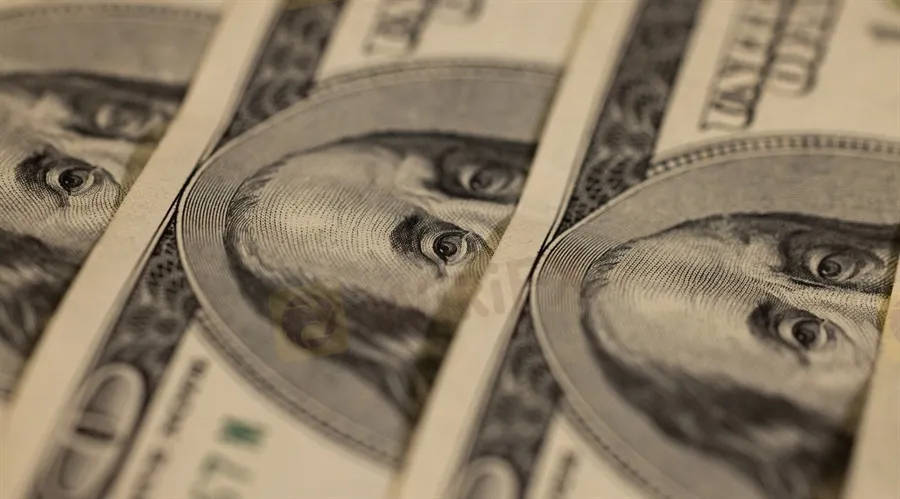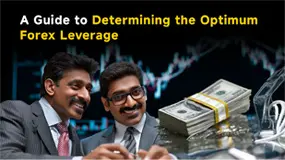简体中文
繁體中文
English
Pусский
日本語
ภาษาไทย
Tiếng Việt
Bahasa Indonesia
Español
हिन्दी
Filippiiniläinen
Français
Deutsch
Português
Türkçe
한국어
العربية
TeleTrade approves that persistent high inflation may threaten stock market returns
Abstract:The current inflation rate may be much higher than reported, and even higher than in 1982.

TeleTrade approves that persistent high inflation may threaten stock market returns
The current inflation rate may be much higher than reported, and even higher than in 1982.
US consumer prices rose by 0.8% in November, having increased by almost 7% over the past 12 months. This is the most significant increase since 1982. But in fact, the current inflation rate may be much higher than reported, and even higher than in 1982.
The housing component of the Consumer Price Index (CPI), which has the most significant weight (24% in CPI and 30% in core CPI), has increased by 3.8% over the past 12 months. If we just compare this with the values in 1982 (7-9% at the peak), then at first glance it seems that the situation could be even worse. However, it is worth taking into account that in 1982 the housing component of the CPI included housing prices. But currently this component is based on the rental rates index. House prices rose by almost 20% last year, compared with an increase of rented properties by only 3.5%.
Adjusting today's housing provision measure to account for rising housing prices and excluding the owners' subindex will lead to a significant increase in the official inflation rate.
Many marketeconomists have noticed this. If these figures are adjusted with this data, the consumer price index has already exceeded 10%, while the basic consumer price index is already 9%. And this is just the tip of the iceberg: inflation, which households are actually experiencing, is raging and significantly exceeds government statistics.
The rise in inflation to a new 39-year high has influenced the views of Wall Street banks on the Fed's policy, noting a reversal in the regulator's response function. It is most likely that in mid-December, the Fed will announce a doubling of the pace of tapering, emphasizing the continuing inflation risks and no longer calling high inflation “transitory” and showing a hawkish shift in the dot chart.
The Fed's forecasts may indicate that two rate hikes will occur as early as 2022, followed by three more increases and the cancellation of the reinvestment policy in 2023, and then the Fed may put forward another three rate increases in 2024. And this is a much more significant rise than the one that actually occurred in 2018-2019.
The change of mood affects the markets: last week was marked with one of the fastest market exits from a state of fear to a state of grid with new highs in indices.
Despite the alarming headlines, financial markets seemed relieved by the results. Why? Supposedly, because for the first time in several months, an increase of 0.5% MoM was in line with expectations and did not come as a surprise. In addition, current market projections suggest that inflation is already close to its peak, and it will begin to slow down sharply starting from 1Q22 with a decrease to 3.5% by the end of 2022.
Drawing from historical analogies, it can be seen that the current market moment, on the one hand, is similar to what is was in the early 1980s when inflation was near double-digits, and according to a number of relative metrics and multipliers, it is more similar to the situation observed from 1973 to 1974.
During the years of high inflation in the 1970s and 1980s, no noticeable growth was seen, it was a “lost decade” for the stock market.
Despite the fact that the stock market is considered to be a pro-inflationary asset, in a situation where there is exceptionally high inflation, an increase in the cost of capital still comes to the forefront – the Feds rate rose from 8.25% to 20% over several years, surpassing the benefits that businesses gained from price increases. UST profitability entered a multi-year cycle of increase and approximately doubled from 8.4% in 1972 to 15.6% in 1982.
The current level of real rates for 10 years in the USA at the level of -4.6% can only be correlated with a few episodes from the past, such as the panic over the oil embargo from 1973 to 1974, the First and Second World Wars and the protracted depression in the USA from 1873 to 1879.
The real return on stocks (CAPE earnings yield minus 10Y TIPS breakeven) became negative for the first time since 2001 - the period shortly before the start of the bear market that lasted from 2001 to2003.
On the other hand, according to our calculations, the risk premium for investing in American stocks now stands at 8.4%, which is higher than the levels from 2020 to early 2021, indicating the potential for narrowing to pre-pandemic levels of about 6.5-7%.
Having the potential to narrow the risk premium is a positive sign for the stock market.
The main factors for its decline in 2022 may be an increase in the dividend payout ratio (against the background of record results in 2021) and, as a result, an increase in the dividend yield of the market, which will partially overcome the consequences of higher rates and rising UST yields.
Summing the above, there is a risk that the annual return of American stocks next year will be below its historical average (the last 30 years) of 9.3%, which will be the worst result since 2018.
This can only be partially offset by an increase in the dividend yield and a redistribution of the proportion in the yield received in favor of current payments .
This could spur interest in value stocks and counter-cyclical dividend stories and protective sectors with high payout rates and reduce interest in pro-cyclical growth stocks.
Ilya Frolov, Head of Portfolio Management, TeleTrade
Disclaimer: Analysis and opinions provided herein are intended solely for informational and educational purposes and don't represent a recommendation or investment advice by TeleTrade.

Disclaimer:
The views in this article only represent the author's personal views, and do not constitute investment advice on this platform. This platform does not guarantee the accuracy, completeness and timeliness of the information in the article, and will not be liable for any loss caused by the use of or reliance on the information in the article.
Read more

Top Tips to Avoid Forex Margin Calls and Protect Your Capital
While technical indicators or chart patterns often capture the attention of forex traders, especially new ones, aspects such as margin requirements, equity, used margin, free margin, and margin levels are often overlooked. So, if you have received a margin call from your forex broker and are wondering how to deal with it, you probably do not know the concept of a forex margin call - what triggers it and how to avoid it. Being unaware of this concept can make you lose your hard-earned capital. In this article, we will provide you with all the information you need to know. Keep reading!

Voices of the Golden Insight Award Jury | Peter Karsten, CEO STARTRADER
WikiFX Golden Insight Award uniting industry forces to build a safe and healthy forex ecosystem, driving industry innovation and sustainable development, launches a new feature series — “Voices of the Golden Insight Awards Jury.” Through in-depth conversations with distinguished judges, this series explores the evolving landscape of the forex industry and the shared mission to promote innovation, ethics, and sustainability.

A Guide to Determining the Optimum Forex Leverage
Want to gain a wider forex market position control by investing a minimal amount? Consider using leverage in forex. It implies using borrowed funds to raise your trading position more than your cash balance can let you do it. Forex traders usually employ leverage to churn out profits from relatively small currency pair price changes. However, there is a double-edged sword with leverage since it can multiply profits as well as losses. Therefore, using leverage in the right amount is key for traders. Forex market leverage can be 50:1 to 100:1 or more, which remains significantly greater than the 2: leverage usually offered in equities and 15:1 leverage in futures.

ECN Forex Trading Account Explained: Unlocking Key Details for a Seamless Trading Experience
Seeking forex trading without any third-party involvement? You have an electronic communication network (ECN) by which you can trade through a computerized system that matches buy and sell orders automatically, eliminating the need for a third party. ECN forex trading especially helps investors across different geographies seeking a secure transaction without a third party. With ECN, investors receive privacy, the luxury of automated investing, and the approach to trade beyond normal market hours.
WikiFX Broker
Latest News
INTERPOL, AFRIPOL Crack Down on Africa Terror Finance
Forex Scam Checker Philippines: Verify Brokers with WikiFX
MH Markets Review 2025: Trading Platforms, Pros and Cons
Mekness Review: Traders Report Alleged Fund Scams & Account Blocks
Octa FX in Pakistan: The Complete Guide to Local Payments, Regulation, and Support
D Prime to Exit Limassol Office Amid Doo Group Restructure
WikiFX Elites Club Committee Concludes Voting! Inaugural Lineup Officially Announced
Fake Trading Platforms Are Spreading Fast Across Asia | How Investors Are Being Tricked
eToro CopyTrader Expands to U.S. Investors
Is MH Markets Safe or a Scam? Regulation and Fund Security Explained
Currency Calculator



